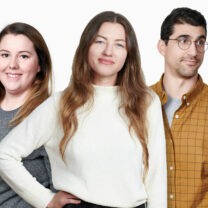Blog
Does Piracy Impact Sales? A Look at the Data
- Content Protection

Does piracy impact sales? People have been asking some version of this question since Napster launched in 1999 and iTunes was still two years away from going live.
It seems as if piracy has always been a step ahead of digital distribution. Megaupload, one of the earliest and largest piracy sources, went live in 2005. Netflix announced that it would offer streaming video in the first weeks of 2007.
As with any tech advancement, broadband arrived armed with a double-edged sword. Media consumption is at an all-time high— and so is piracy. In 2018, video streaming subscribers outnumbered paid-TV subscribers for the first time, making both distribution and piracy easier than ever.
This leaves everyone from creators to distributors asking: Does piracy impact sales on music, movies and more?
The short answer is yes — but it’s complicated.
There are invested interests in the answer to this question. If you operate a major online service, you don’t want to spend millions managing somebody else’s copyright issues. If you’re a content creator, you don’t want to lose revenue to illegal competition.
Corsearch works in the copyright enforcement business obviously, but our livelihood depends on a truthful answer to this question. We are in the business of solving customer problems. Nobody can build market value solving a problem that doesn’t exist.
So, while the copyleft and copyright bloggers of the world may never agree on this great question, we at Corsearch set out on a fact finding mission. We wanted to pull from some of the best research out there from people whose livelihood does not depend on the answer.
The EU Study That Sparked a Conversation — But Left More Questions Than Answers
A couple of years ago, an exciting insider story broke: the European Union had suppressed a study detailing the impact of piracy on sales. The EU originally commissioned the report hoping to shore up support for new anti-piracy enforcement measures.
But it turned out that the study found that piracy had no impact on sales — at least in some cases.
The suppression story broke, and it made for a nice new cycle narrative. But did all that buzz about censorship give the full picture? Let’s start with the buried EU study. Here’s part of what the study actually said:
“The results do not show *robust statistical evidence *of displacement of sales by online copyright infringements. That *does not necessarily mean that piracy has no effect* but only that the statistical analysis does not prove with sufficient reliability that there is an effect.”
In other words, the study simply failed to find a statistically significant relationship between online piracy and sales displacement across the board. It did not categorically refute the notion that piracy impacts sales.
The same EU-commissioned study found one important exception to its findings: piracy of recent top box office hits. Pirated versions of ‘recent top films’ resulted in a displacement rate of 40 percent — for every ten blockbusters watched illegally, four fewer films were watched legally.
That’s an important clarification to make. Consider that the top ten grossing films from 2017 accounted for over a third of total box office revenue, let alone digital and physical sales. This displacement rate translated into a 5 percent loss of sales for the ‘recent top films’ from 2017. How many CEOs don’t need an extra 5% in earnings?
That doesn’t sound like nothing.
At the same time, other research does support what our intuition tells us: online piracy impacts sales at the box office, on digital distribution channels and beyond. The evidence for piracy’s impact on sales varies, but it’s not inconclusive. It all points in the same direction: down.
So what do the experts have to say on what we know — and what we don’t — about piracy and sales?
Top Studies Show Displacement and Willingness to Pay Impact Sales
Research from around the world highlights a low willingness to pay and a relatively high displacement rate as the two major factors contributing to piracy’s impact on sales. And the impact may be bigger than you think.
A year before the EU story broke, the folks at the Technology Policy Institute (TPI) wrote on the complicated question of piracy and sales. “You can make a perfectly valid theoretical argument that in most cases piracy will hurt legal sales (after all, when something is available for free it is generally harder to convince people to pay for it),” the authors wrote.
Determined to make an objective inquiry, the researchers looked at 25 studies on the subject. Nearly 90 percent of these studies (22 out of the 25) found a statistically significant, harmful impact of piracy on sales. While the TPI recognized that the question is complicated and economic theory inconclusive, again, the research all points to the same downward pressure on sales.
A study from the Global Innovation Policy Center found that piracy of both film and TV content costs the US economy more than half a trillion dollars each year. This includes everything from box office sales and digital distribution to the loss of jobs. “Just like authorised supply via platforms such as Spotify and Netflix, illegal supply expanded to streaming more recently, enabling users to enjoy music, films and series without permanently downloading them,” the researchers wrote.
At the bottom of these somewhat scary numbers are two interrelated factors: the displacement rate of piracy and the pirates’ willingness to pay.
Homing in on distributors and producers, the same study found a displacement rate of 34 percent — lower than the EU study but still very significant. The model showed lost sales in the billions of dollars.
Google sponsored a study from the Institute for Information Law (IViR) that complied with the Royal Dutch Institute for Science’s rigorous standards for independence. In that study, researchers found an increase in the per capita volume of illegal content year-over-year. This translated into a 46 percent displacement rate and 4.1 percent lost sales for blockbuster films.
The study found three potential distinct effects of online piracy on legal sales:

This study analyzed multiple dimensions of displacement, showing just how complicated the issue is. For example, piracy has been shown to benefit live music concerts, but it displaces downloads and to a much lesser degree streaming. Intuition would say that piracy displaces high value textbooks and games, but not lower value for trade books and casual games. Likewise, piracy competes more with theater purchases than it does with downloads.
All of these are different examples of a lack of willingness to pay — if they could pay less by waiting or pay nothing at all by pirating, why would consumers pay the launch price? The original EU study found that 4 out of 5 consumers were unwilling to pay market rate for Film and TV shows.
Aside from the 23 studies cited by TPI that found a negative impact on sales, all three studies above confirmed that piracy affects sales either by displacing consumption or providing an alternative means of consumption for those unwilling to pay market prices.
The only question that remains is what producers and distributors can do about it.
And the Matter of the Check: How a Culture of Piracy Dismisses the Value of Paying Content Creators
While the impact of piracy on sales is certainly the headline here, the research also reveals more about the shape of piracy today.
The Google-sponsored study, for example, found a huge overlap between ‘pirates’ and ‘legal users’. While pirate consumers “tend to be somewhat younger and more often male,” they are otherwise very similar to legal users in terms of demographics. Not only that, but the vast majority of pirates also consume media legally at twice the rate of “non-pirating legal users.”
In other words, it’s no longer accurate to think of ‘pirates’ and ‘legal users’ in two distinct groups. When we talk about ‘pirates’ today, we are no longer talking only about consumers with an active BitTorrent account or spreading links around the dark web. We are talking about average consumers accessing pirated content with a simple Google search.
Add to that the fact that a good percentage of Americans don’t care about the impact of piracy, and you have the recipe for a culture that accepts piracy as a normalized means of accessing and enjoying content. It’s not with ill-intent, it’s not with a criminal mindset; it just seems easier when content is either geo blocked, locked behind a subscription fee or otherwise perceived as inaccessible.
This is why major pirate sites keep popping up. Popcorn Time, FlixTor, PutLocker… they all have a seemingly limitless half life as they continue to respond to demand. “It’s just not enough to battle the supply of piracy,” writes Nelson Granados at Forbes. “Reducing demand for piracy is key. As long as there is a demand for digital pirated copies, there will always be room for pirate sites to thrive.”
This is the culture of piracy. It’s easy, it’s accepted, it’s visible. And it’s a problem for everyone from large scale distributors to independent creators.
The demand for pirated content isn’t likely to decrease any time soon, and it’s turning piracy into a bigger problem for sales revenue every year.
Does Piracy Impact Sales? It’s a Snowball Effect, Not a Slippery Slope
Remember when credit card fraud was just a cottage industry of small networks of identity thieves?
We now live in an age of mega breaches and underground economies where card numbers sell on underground markets like cattle for a market price.
It’s not a slippery slope to say that small, apparently innocuous, things can turn into much bigger, costly things. It’s a snowball.
Piracy seems to be following a similar trajectory, and there is no question that it will continue to impact sales negatively. So what happens when you let people steal and get away with it?
Piracy platforms are more accessible, which means the average consumer in 2020 is more likely to pirate content than their 2001 counterparts. If this subset of media consumption is left unchecked, piracy will continue to proliferate at a rate commensurate with consumption across the board.
The biggest anti-piracy challenge “may be to change a society that increasingly condones piracy,” concludes Granados. Reverting a culture of piracy may seem like a task without end, but reducing the visibility of pirated content (with a market-driven approach to anti-piracy) is a close approximation.
There is a consensus in independent research. Piracy is no longer confined to tech saavy users and the dark corners of the web. It’s a digital product like any other, and it’s impacting sales by billions of dollars. Determining the exact impact is an art just like estimating the return on investment for marketing dollars, but there is no doubt that those who spend on anti-piracy build more value for their brand than those that do not.





